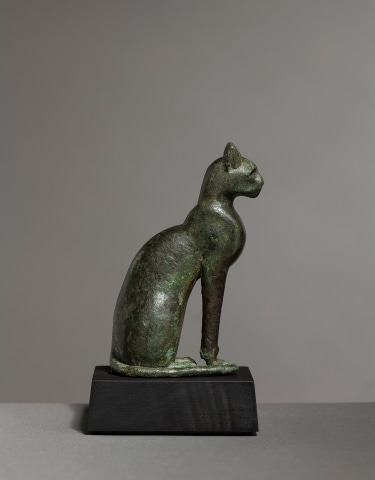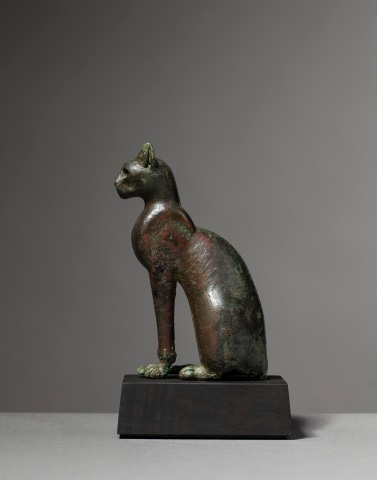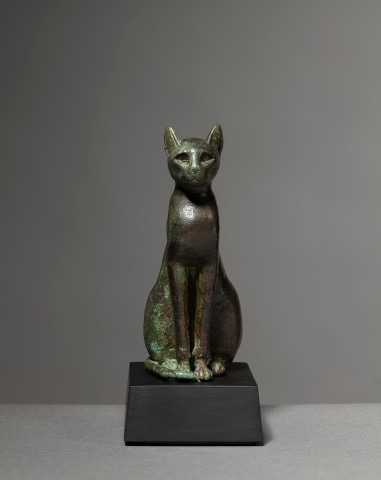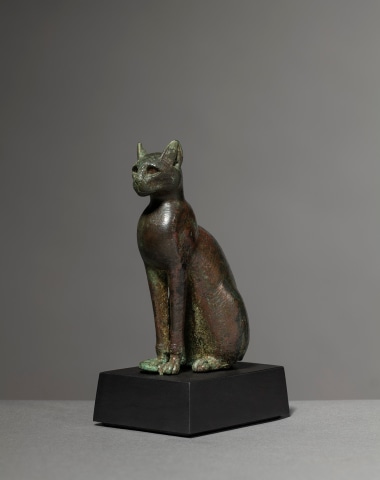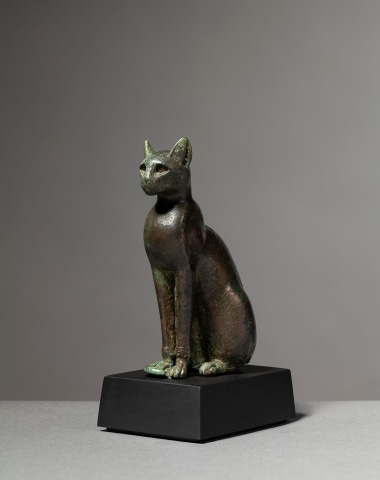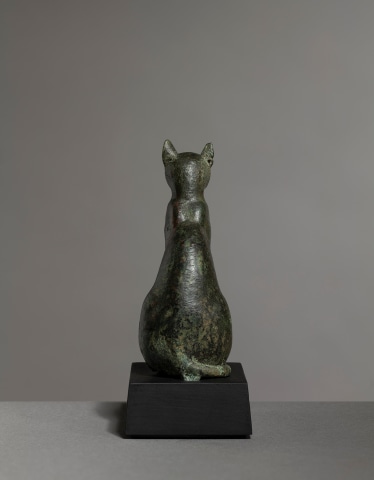Further images
Hollow cast statuette of a cat seated on its haunches, its tail
curling round to the right with the tip against the front paws.
The long forelegs hold the chest erect, which, coupled with
the curved back, creates an elegant profile. The head is held
upright, gazing straight ahead, eyes hollow for inlays, its
pricked ears pierced for rings and incised with parallel lines.
Intact, small loss to tip of proper right ear, small loss to proper
left rear at base of tail, a few small casting faults, the surface
with a mottled red and green patina.
The cat is a manifestation of the goddess Bastet. The female
cat was seen as a fecund creature, capable of producing many
offspring, attentive to her young and yet fiercely protective.
Revered as a mother goddess, Bastet served as a benevolent
counterpart to the more aggressive lion deity, Sekhmet.
Typically portrayed as either a cat-headed woman or as a
feline, Bastet held her principal cult centre at Bubastis in the
Nile Delta. Likely originating from a temple, this bronze figure
would have been dedicated by the donor seeking to establish
communication with the goddess. Such hollow figures often
contained mummified felines.
Provenance
Enid Hardwicke (1928-2021), Villa de Segurs, Paris, France; acquired in Paris during the late 1960s
Rupert Alan Francis David Boulting, Eynsham, UK; by descent from the above, his mother
Lady Hardwicke was a fashion model who married twice, first to the film director Roy Boulting, and later the 9th Earl of Hardwicke
